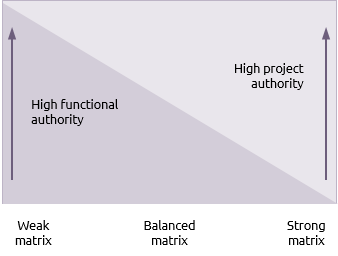The matrix organisation gets its name from the fact that projects and programmes cross business-as-usual departments to form a matrix. At the intersections of the matrix are the staff who constitute the resources of both projects, programmes and business-as-usual.
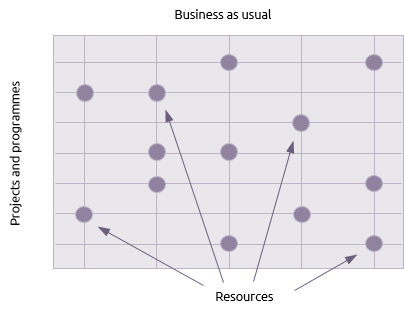
Authority over the resources is shared between the departments and the projects or programmes. Sometimes this is biased towards the project or programme; sometimes it is biased towards the department.
Broadly speaking there are three types of matrix organisation: weak, balanced and strong. These principally apply to projects where the departmental resources make up the delivery team but the same principles may apply to project and programme management teams.
Weak matrix
In a weak matrix, the project is co-ordinated across departments by the people working on the project. There may well be project leaders within each department who work together but the departmental boundaries are still in evidence. Individuals still report solely to their departmental managers. This is not a lot better for the project than the purely departmental organisation as there is still no project manager and hence, no single point of accountability for the project.
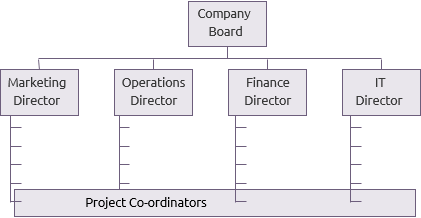
Balanced matrix
In a balanced matrix, a project manager is appointed from within a department providing a clear single point of accountability.
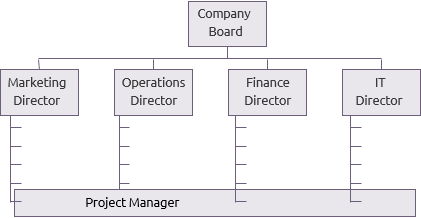
This should solve problems of co-ordination across departments but there are still potential conflicts of loyalty.
In the balanced matrix, where does the project manager come from? If he or she is appointed from within the ranks of a department, where do loyalties lie, with the needs of the project or the needs of the department? These will inevitably conflict at some stage.
A project manager must be accountable for the success of the project. But if he or she does not have authority and control over the resources working on the project, how can they really be held accountable? Accountability without authority is a recipe for stressed project managers and failing projects.
Strong matrix
In this approach, the project managers are taken out of the departmental structure and report to a head of projects, possibly a Projects Director or manager of a Project Management Office (PMO). Resources from each department are assigned to projects and authority for them is shared between the project manager and the line manager.
Team members will be seconded to the project for an agreed period of time and may physically move from their department to a co-located project team. This raises issues of induction into the project team and demobilisation (integration back to the department) when the project (or their involvement in it) is finished.
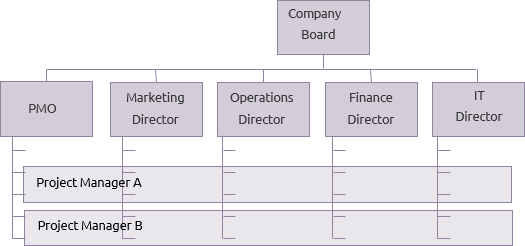
In a strong matrix, the company has to maintain an entirely new line of reporting. Departmental managers may feel detached from projects and not give them their full support, which is where effective sponsorship becomes really important.

